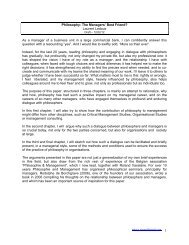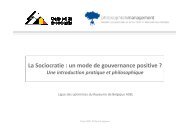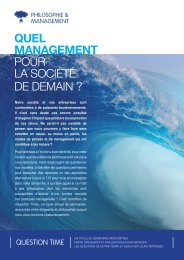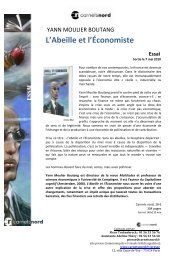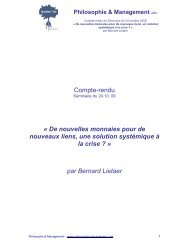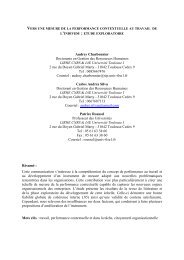The $100 billion question - Signal Lake Venture Fund
The $100 billion question - Signal Lake Venture Fund
The $100 billion question - Signal Lake Venture Fund
Create successful ePaper yourself
Turn your PDF publications into a flip-book with our unique Google optimized e-Paper software.
<strong>The</strong>re is a large literature measuring the costs of past financial crises. 1 This is typically done by<br />
evaluating either the fiscal or the foregone output costs of crisis. On either measure, the costs of<br />
past financial crises appear to be large and long-lived, often in excess of 10% of pre-crisis GDP.<br />
What about the present crisis?<br />
<strong>The</strong> narrowest fiscal interpretation of the cost of crisis would be given by the wealth transfer from<br />
the government to the banks as a result of the bailout. Plainly, there is a large degree of<br />
uncertainty about the eventual loss governments may face. But in the US, this is currently<br />
estimated to be around <strong>$100</strong> <strong>billion</strong>, or less than 1% of US GDP. For US taxpayers, these losses<br />
are (almost exactly) a <strong>$100</strong> <strong>billion</strong> <strong>question</strong>. In the UK, the direct cost may be less than £20<br />
<strong>billion</strong>, or little more than 1% of GDP.<br />
Assuming a systemic crisis occurs every 20 years, recouping these costs from banks would not<br />
place an unbearable strain on their finances. <strong>The</strong> tax charge on US banks would be less than $5<br />
<strong>billion</strong> per year, on UK banks less than £1 <strong>billion</strong> per year. 2 Total pre-tax profits earned by US<br />
and UK banks in 2009 alone were around $60 <strong>billion</strong> and £23 <strong>billion</strong> respectively.<br />
But these direct fiscal costs are almost certainly an underestimate of the damage to the wider<br />
economy which has resulted from the crisis – the true social costs of crisis. World output in 2009<br />
is expected to have been around 6.5% lower than its counterfactual path in the absence of crisis.<br />
In the UK, the equivalent output loss is around 10%. In money terms, that translates into output<br />
losses of $4 trillion and £140 <strong>billion</strong> respectively.<br />
Moreover, some of these GDP losses are expected to persist. Evidence from past crises suggests<br />
that crisis-induced output losses are permanent, or at least persistent, in their impact on the level<br />
of output if not its growth rate. 3 If GDP losses are permanent, the present value cost of crisis will<br />
exceed significantly today’s cost.<br />
By way of illustration, Table 1 looks at the present value of output losses for the world and the<br />
UK assuming different fractions of the 2009 loss are permanent - 100%, 50% and 25%. It also<br />
_____________________________________________________________________________<br />
1 For example, Reinhart and Rogoff (2009).<br />
2 <strong>The</strong> levy on US banks announced by the US government in January takes the <strong>$100</strong> <strong>billion</strong> loss and recoups it over<br />
10 years rather than 20.<br />
3<br />
IMF (2009).<br />
3



